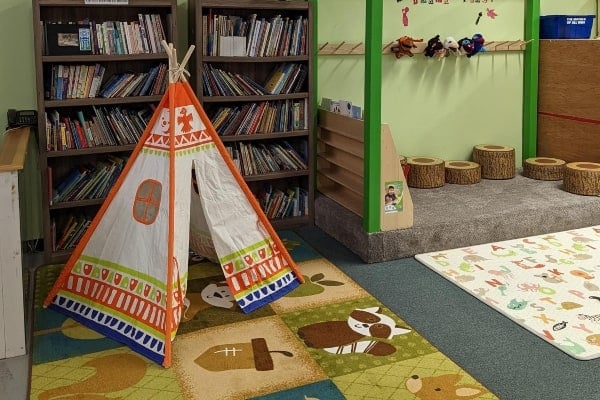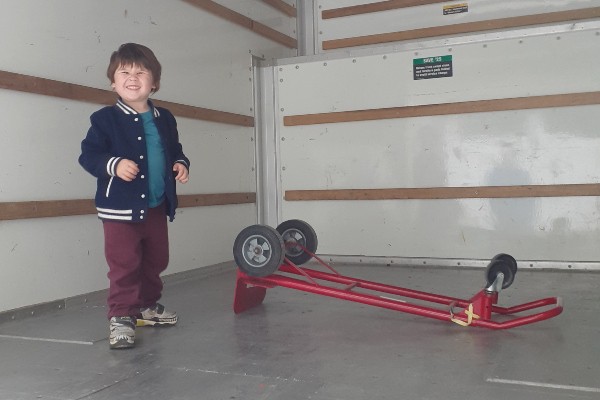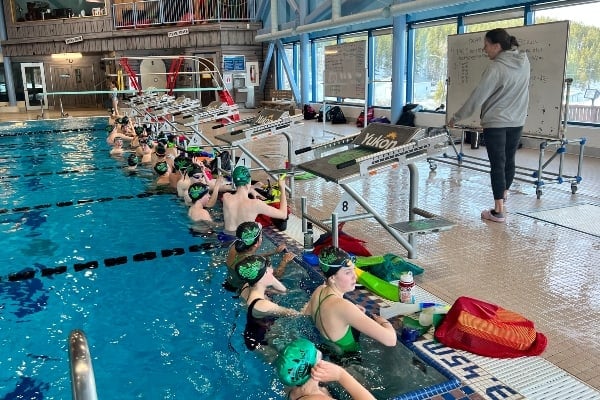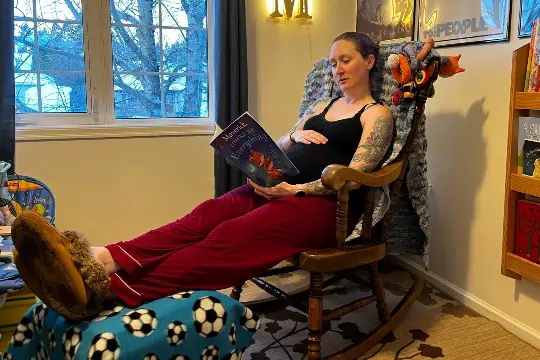My daughter Emily just completed Puddle Jumpers. It’s the first of a six level swimming course called the Little People Program. The lessons are offered at the Canada Games Centre (CGC) for children, ages three to six.
She was all smiles when she came home after her last class with her progress report card, indicating she was ready to move on to Splashers. She had such a fun time, I doubt she even realised she was learning as she went along.
Her instructor, Tessa Rittel, was confident and hands-on with the group, always keeping the little ones engaged in their activities. She’s is one of 32 CGC staff who are fully trained to teach the Little People Program and the I Can Swim curriculum, for older kids.
The goal of Puddle Jumpers is to help children be comfortable in the water, and to allow them to work with instructors, as opposed to parents. Each child progresses at his or her own pace.
Aquatic coordinator Miscal Avano-Nesgaard explains, “As long as kids are having fun and gaining skills and progressing, they’re meeting the aims of the Little People Program. It’s not a pass or fail approach.”
Puddle Jumpers has a variety of fun games to help young students learn and get oriented in the water. In the Tree Game, students stand on the side of the pool and become seeds. You splash them, which makes them grow, which gets them used to water. They turn into trees and the instructor “cuts” them down — the kids jump into the pool at this point.
In Treasure Hunt, rings are tossed in the pool. The goal is for the little ones to submerge them, and learn to blow bubbles. “It’s fun, and they don’t realise it’s scary” said Rittel. “Children are happy and excited to have fun and play games,” she says. “Sometimes you get students that are scared of the water or of the instructor, but you get used to that. You let them come to you when they are ready.”
Rittel started her swimming education with Puddle Jumpers, as some of you readers may have, too. The program was started in Whitehorse in 1988, when Lois Moore picked it up from a pool in Montrose, B.C. At the time it was an eight level program, which she adapted to four, and has since been modified to six. The program itself is constantly revised to keep up with aquatic research and current trends. Moore is also the creator of the cool duck drawings found on the progress card and the little people program stickers.
If a parent decides to register their little one in the Little People Program, they can move up level by level. Students learn how to tread water, breath rhythmicly, do the front and back crawl, do basic kicks, and endurance swim. The Little People report card has all six levels, so you see the gradual progress.
After they have completed the Little People Program, or once they turn six or seven, students can move to the I Can Swim level for ages 6-12, which “teaches school age children 54 important swimming skills and focuses on seven major skill progressions.”
Until then, the little ones can enjoy fun games, meet new friends, and start learning the fundamentals of swimming.
Rittel does have some heartwarming advice for newcomers who want to continue the programs: “Bring your progress report back every time.”
For more information you can check out the active living guide at the CGC or online at www.canadagamescentre.whitehorse.ca.




